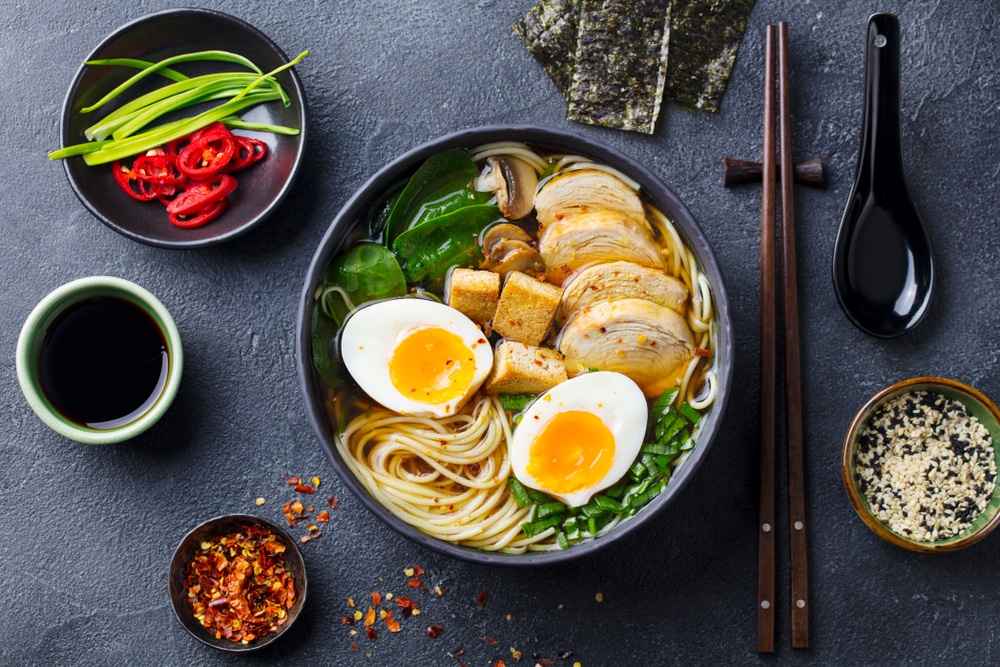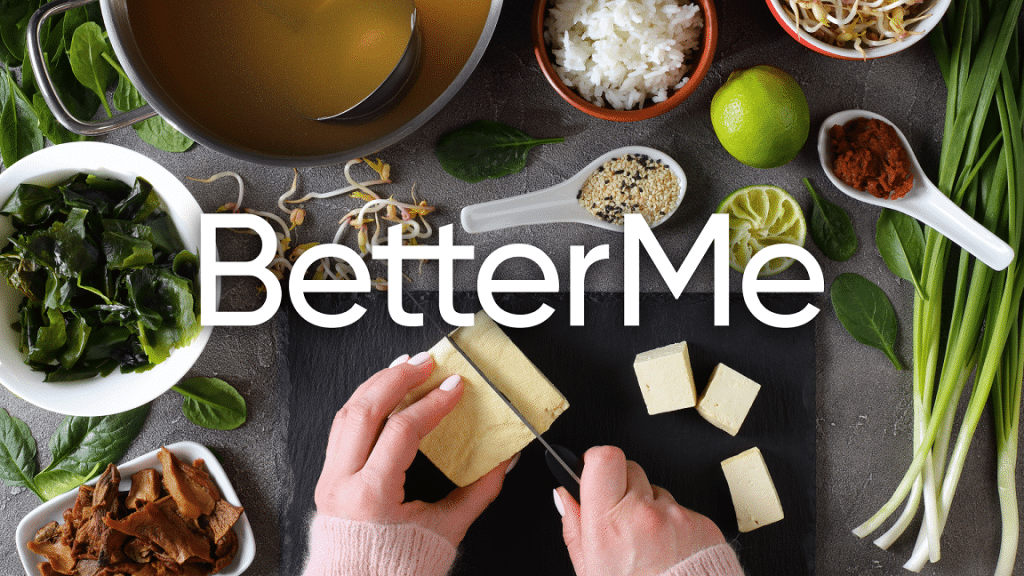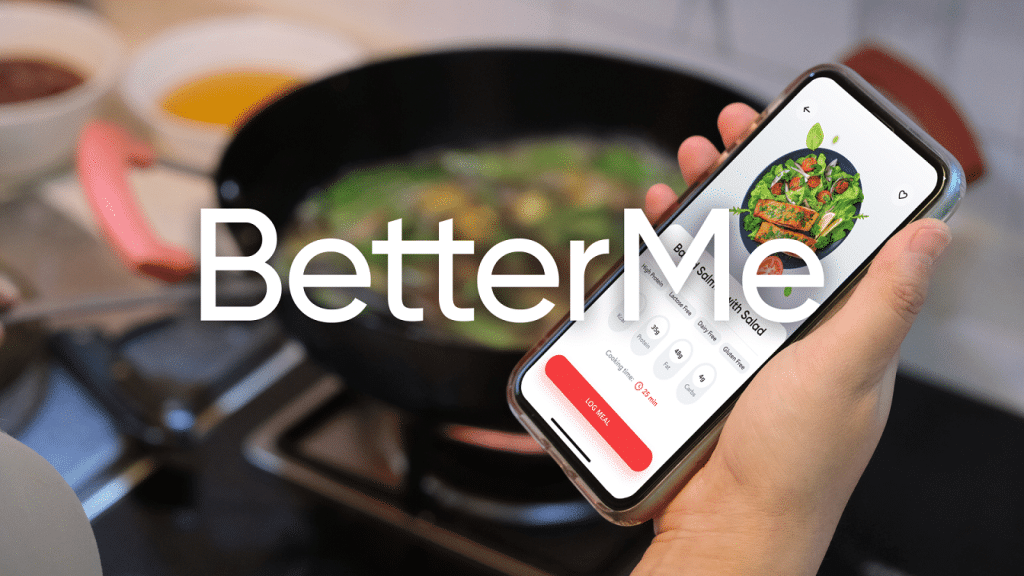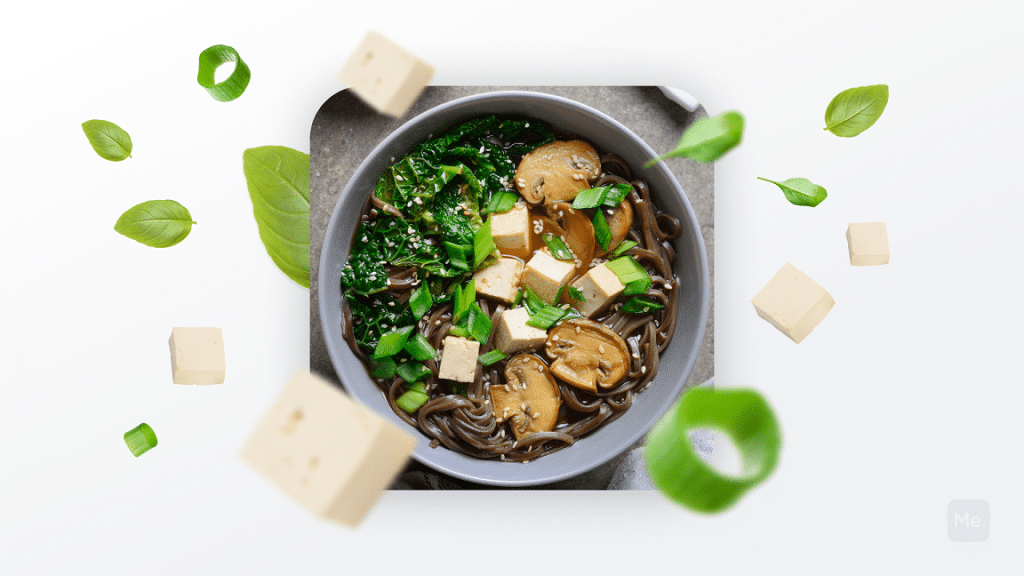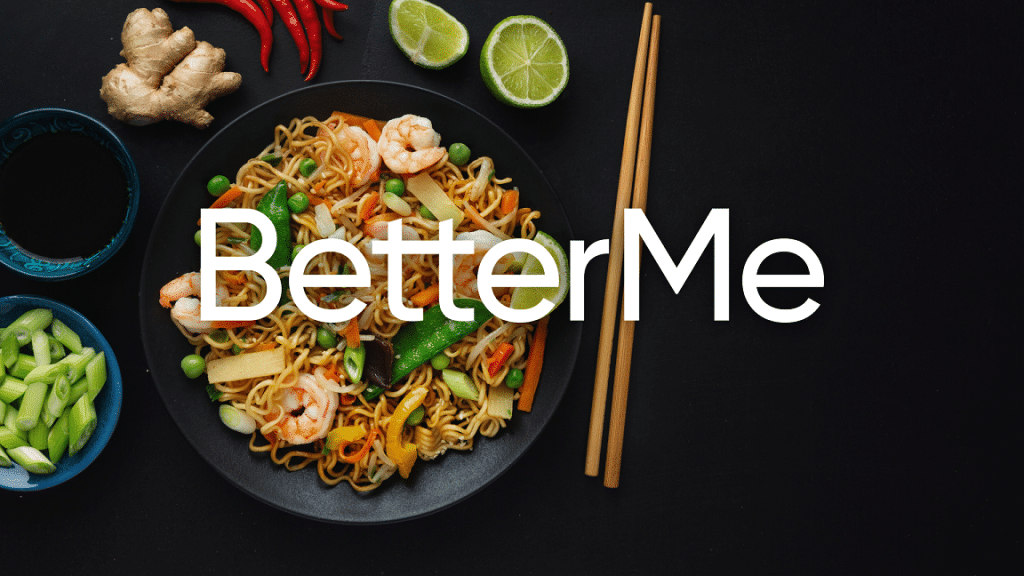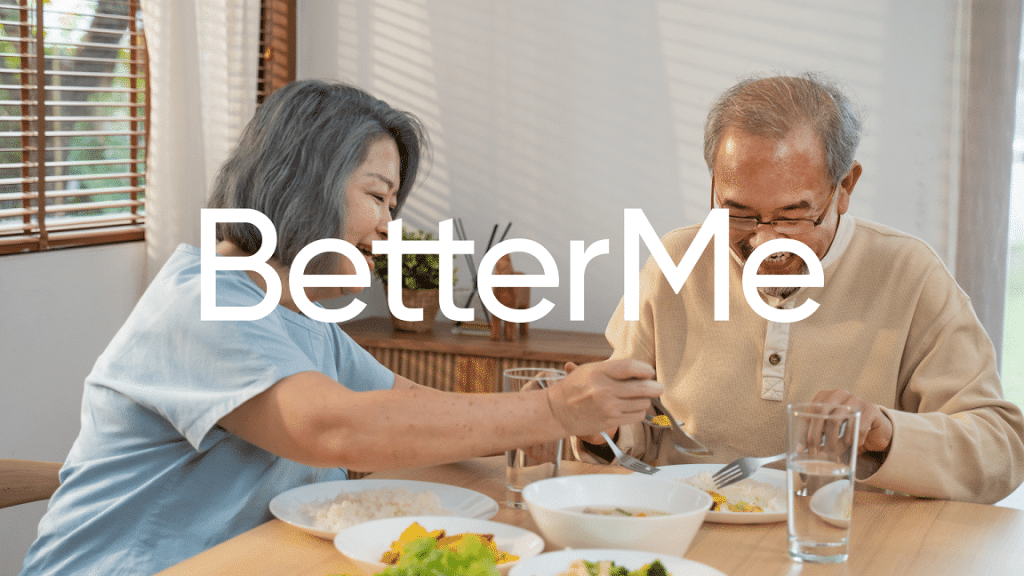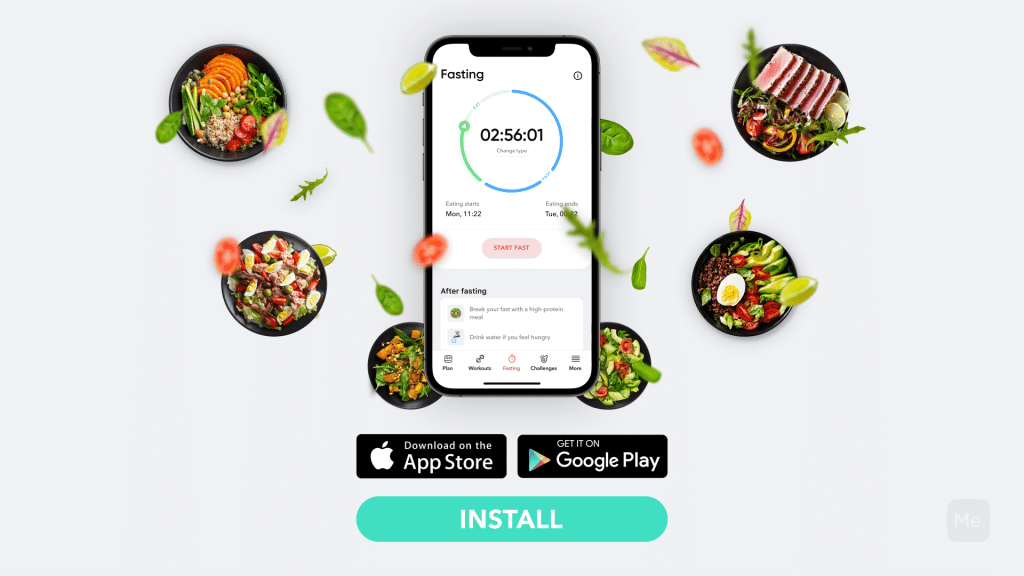The consumption of instant noodles, like ramen noodles, has tremendously increased over the past few decades. Most people consider these meals quick meal preps, which is probably the main reason why they have become quite popular. That said, the problem is that many people have adopted the consumption of these foods without researching their nutritional profile or benefits. You will find that a large percentage can hardly tell you of the health benefits of eating ramen noodles. Well, in regards to saving time, they are easy and quick to prepare. But do these foods bring more than this to the table? Let us find out by exploring ramen nutrition facts.
Get your personalized
meal plan!
Of course, the ramen noodle packages list various nutrients and specific amounts that you will get after consuming the noodles. But do these nutritional labels exaggerate or give the wrong figures? Let us find out by discussing scientifically backed-up ramen nutrition facts. Forget the diet generator because this read has a comprehensive nutritional breakdown based on scientific evidence. Check it out!
Ramen Noodles Nutrition Facts
Here are some of the top ramen nutrition facts you need to know before giving in to this noodle craze. It would help if you learned these facts because they help you know a thing or two about these noodles. With such knowledge, you can make significant decisions about incorporating these foods to help meet your daily calorie limit.
Similarly, these facts will help shed light on whether consuming these noodles will help you attain your goals or not. For example, these facts may help shed light on whether you can consume these noodles to prompt weight loss or not. Here are facts you should know:
-
These Noodles Have A Low Nutritional Profile
Every product tends to have a different nutritional profile. For some, the nutritional content is higher, and in others, it is significantly lower. Unfortunately, most ramen noodles tend to have an incredibly low dietary profile.
Let us evaluate the nutritional profile of one serving (roughly 43 grams) of chicken-flavored instant ramen noodles. The nutritional information is as follows (8):
- Calories- 188
- Protein- 4.6 g
- Total carbohydrate- 27.3 g
- Total fats- 6.7 g
- Dietary fiber- 1 g
- Vitamin A- 0.4 IU
- Vitamin E- 0.6 mg
- Calcium- 11.6 mg
- Iron-1.7 mg
- Sodium- 891 mg
- Magnesium- 9.5 mg
- Potassium- 74.4 mg
- Phosphorus- 50.7 mg
- Zinc- 0.3 mg
- Copper- 0.1 mg
The following nutritional information indicates that the noodles have a low content of essential minerals and vitamins like dietary fiber. Similarly, we can also tell that these foods lack other vital nutrients, including vitamin B-12.
Likewise, by looking at this nutritional chart, we can tell that these noodles fall short in vital components such as antioxidants and phytochemicals. We need antioxidants in our bodies to help protect us against cell damage caused by free radicals known as oxidative stress (2).
Oxidative stress is caused by activities and processes such as mitochondrial activity, smoking, radiation, environmental pollution, exposure to chemicals, and excessive exercise (2). On the other hand, polyphenols, which are collectively known as phytochemicals, help reduce your risk of obesity, type 2 diabetes, and heart disease (10).
Read More: How To Stop Eating Junk Food: Tips And Tricks To Improve Your Eating Habits
-
They Are Loaded With Sodium
If we go by the nutritional profile above, you will discover that one serving of chicken-flavored ramen noodles has 891 mg of sodium. According to the Center for Disease Prevention and Control (CDC), Nutrition Facts Panels on foods use sodium and salt interchangeably (7).
The rationale stems from the fact that sodium makes up to 40% of salt, so most food labels use sodium instead of salt (4). However, to get the exact salt content, you will have to multiply the sodium content by 2.5 (4).
Adequate sodium in your diet is essential, but too much of it is dangerous as it may lead to several health complications. According to Medical News Today, high sodium content has been linked to high blood pressure, heart disease, and kidney stones (4). Since these noodles have high sodium content, it means that you run the risk of attaining these health conditions.
On the flip side, consuming too little sodium is also dangerous to your health. It may lead to hyponatremia, and symptoms of confusion, seizures, muscle cramps, and dizziness (4). The CDC suggests you stick to the recommended daily sodium intake (7).
It states that the 2015-2020 Dietary Guidelines for Americans suggests salt consumption below 2, 300 mg of sodium every day (7). Talk to your nutritionist or dietitian if you are salt sensitive but want to incorporate these foods into your diet. Do not ignore the importance of seeking professional help because such a high-sodium diet can negatively impact your health.
-
They Are Linked To Heart Disease Risk
According to a Harvard School of Public Health (HSPH) study, women who consumed instant noodles like ramen noodles were reported to have a high risk of cardiovascular disease (6). The study denotes that the frequent consumption of these noodles increased the participants’ risk factors of heart diseases, including their blood pressure, cholesterol levels, blood sugar, and obesity (6).
The HSPH study findings concur with another study conducted among adults in South Korea, where consumption of instant noodles like ramen is high (5). The study revealed that frequent consumption of these foods was linked to increased cardiometabolic risk factors, especially among healthy college students ranging between 18 and 29 (5).
Based on this information, you must seek advice from a certified healthcare provider before adding these noodles to your diet plan. Remember that your health comes first, and there is no need of risking it by consuming otherwise termed ‘risky’ foods.
BetterMe app will kick you out of the mental funk, shake off your extra weight, rid you of your energy-zapping habits, and help you sculpt the body of your dreams. Intrigued? Hurry up and change your life for the better!
-
They Have High Tertiary Butylhydroquinone (TBHQ) Content
Tertiary butylhydroquinone (TBHQ) is a popular preservative used by manufacturers to help prolong the shelf life of an item (1). According to Medical News Today, this preservative can be found in numerous products. Some of these include processed foods like crackers, peanut butter cups, and various Swiss rolls (1).
This has also been found in ramen instant noodles. Although it extends the product’s shelf life, the preservative has been found to have immunotoxic effects in animal studies (1). According to recent studies, chronic exposure to this preservative has led to neurological damages, liver enlargement, and increased lymphoma risk (1).
Similarly, the studies state that some individuals who have been exposed to TBHQ over the long haul may report other symptoms. These include vision disturbances and DNA damages (1). You need to seek professional help before consuming these noodles, mainly if you are sensitive or allergic to such a food preservative.
Your dietitian may ask you to steer away from these foods and others that contain such preservatives. Go ahead and ask them for substitutes for these noodles if you have a strong urge or craving for them.
Are Ramen Noodles Bad For You?
Ramen noodle lovers will insist that these foods are in no way bad for you. However, by looking at the ramen noodles nutrition facts, we gather that they are not healthy. Again, we have not seen any significant health benefits of eating these instant noodles. So, it is safe to say that ramen noodles are not suitable for you.
What if you take them without seasoning? Can you make them healthy by avoiding the spicy flavored ones? These are questions you will find people asking to validate their decision to eat ramen noodles once in a while.
Keep in mind that the seasoned or flavored ramen noodles are not so different in terms of nutrition from the seasoned or flavored ones. So, the ramen noodles nutrition facts without seasoning will also resemble the points discussed above.
The best way to get the green light of consuming these foods is by talking to your doctor and nutritionist. Remember that we mentioned they have low nutritional content, meaning overconsumption of these noodles can lead to several deficiencies. Talking to a professional will help you determine when, how, and how frequent you can consume them without risking your health.
Read More: Take Up This 7-Day No Junk Food Challenge
Does It Mean I Cannot Eat Ramen Noodles?
These instant ramen noodles have been deemed to have zero health benefits. They are low in fiber and protein, meaning that they do not support weight loss. As a result, they cannot be added to a weight-loss diet plan.
Secondly, we have determined that they contain low traces of essential vitamins, minerals, polyphenols, and antioxidants. It means that you cannot consume them as part of healthy eating or to help you maintain a healthy lifestyle.
So, does it mean that you cannot eat ramen noodles at all? No, it does not. Scientists only acknowledge that eating these foods by themselves is unhealthy. They, however, recognize that the noodles can be consumed more often if one prepares them using healthy recipes and ingredients.
Lean and toned up body isn’t just a far-fetched fantasy. Check out the BetterMe app and watch it propel your weight loss journey into high gear!
How Can You Make Ramen Noodles Healthier Or Better?
When trying to prepare healthy ramen noodles, the first thing you have to consider is increasing their nutritional value. Keep in mind that most food experts disregard these noodles because of their poor nutritional profile. So, you may want to improve its nutritional value by using additional healthy ingredients with a high nutritional value.
One healthy addition to your ramen noodles to help boost the nutritional value is vegetables. Below are some of the vegetables you can consider adding, depending on your preference (9):
- Spinach. One cup of raw spinach has seven calories and high amounts of iron, calcium, antioxidants, folate, magnesium, and vitamins C and K.
- Kale. One cup of raw kale contains seven calories and reasonable amounts of vitamins K, C, and A.
- Broccoli. One cup of chopped and boiled broccoli has 31 calories and decent antioxidants and vitamins K and C.
- Cauliflower. A cup of chopped cauliflower has 27 calories and plenty of vitamin K, C, and dietary fiber.
If not, you can add chicken to your ramen noodles. Chicken comes in different cuts, and once again, it comes down to your preferences. However, it would help if you remembered that each cut contains additional calories and nutrients. Let us go through the nutritional profile of various chicken cuts as denoted by Medical News Today (3):
- Boneless and skinless chicken breasts. These chicken cuts are pretty popular, and you will easily find them at your nearest grocery store. A 3.5 ounce serving of cooked boneless and skinless chicken breast has 165 calories. It is also loaded with 31 grams of protein, 1 mg of iron, 3.6 grams of fat, and 74 mg of sodium.
- Skin on and bone in breast. This chicken cut can also go well when served with your ramen noodles. A 3.5-oz serving provides 197 calories and 30 grams of protein, 7.8 grams of fat, 71 mg of sodium, and 1 mg of iron.
- Drumsticks with skin on. If you love some chicken drumsticks, you will be pleased to know that you can have them with these noodles. A 3.5 ounce serving of cooked drumsticks with skin on provides 216 calories. You will also get 90 mg of sodium, 1.3 mg of iron, 27 grams of protein and 11.2 grams of fat.
- Thighs with skin on. You can also make ramen noodles better or healthier by boosting their nutritional profile using chicken thighs with skin on. A 3.5 ounce serving of these chicken cuts will provide you with 229 calories. More so, you will get 25 grams of protein, 1.3 mg of iron, 84 mg of sodium, and 15.5 grams of fat.
- Wings with skin on. If you are craving some ramen noodles, you will be pleased to know that you can make them better by adding your all-time favorite chicken wings. A 3.5 ounce serving of wings with skin on will provide you with 290 calories. In addition, you will get 82 mg of sodium, 27 grams of protein, 19.5 g of fat, and 1.3 mg of iron. If you decide to do away with the skin, the wings will provide you with 203 calories, 30 grams of protein, and 8.1 grams of fat.
So far, so good because we can now tell how we can healthily prepare ramen noodles without any nutritional worries. However, remember that some additional herbs, spices, and dressings may affect the nutritional profile, either positively or negatively. So, talk to your nutritionist and ask them to help you develop healthy recipes and menus. It is the only sure bet that you are attaining vital nutrients from the ramen noodles and vegetable or chicken serving.
The Bottom Line
The ramen nutrition facts discussed in this article indicate that the noodles have low nutritional value, high sodium content, and high TBHQ levels. All these amounts pose various health risks, not forgetting that the noodles also increase your cardiometabolic and heart disease risk. Although you can make them healthier by adding vegetables and lean meats like chicken, always seek professional advice beforehand.
DISCLAIMER:
This article is intended for general informational purposes only and does not address individual circumstances. It is not a substitute for professional advice or help and should not be relied on for decision-making. Any action you take upon the information presented in this article is strictly at your own risk and responsibility!
SOURCES:
- Can a common preservative harm the immune system? (2021, medicalnewstoday.com)
- How can antioxidants benefit our health? (2018, medicalnewstoday.com)
- How many calories are there in different cuts of chicken? (2019, medicalnewstoday.com)
- How much salt should a person eat? (2017, medicalnewstoday.com)
- Instant noodle consumption is associated with cardiometabolic risk factors among college students in Seoul (2017, ncbi.nlm.nih.gov)
- Instant noodle consumption linked to heart risk in women (2021, hsph.harvard.edu)
- Sodium (2020, cdc.gov)
- Soup, ramen noodle, chicken flavor, dry Nutrition Facts & Calories (2018, nutritiondata.self.com)
- What are the most healthful vegetables? (2020, medicalnewstoday.com)
- Why are polyphenols good for you? (2017, medicalnewstoday.com)
